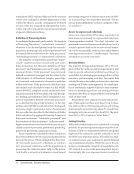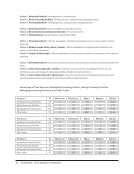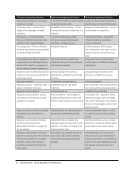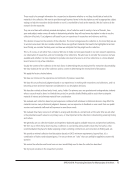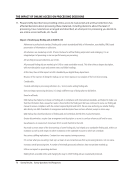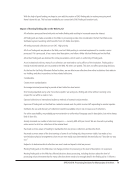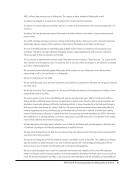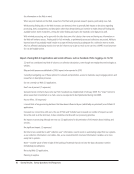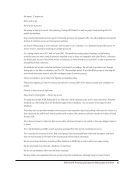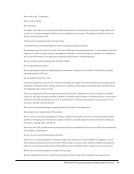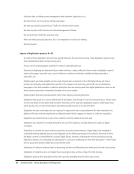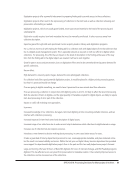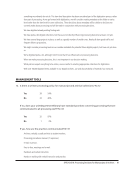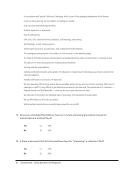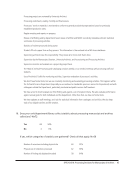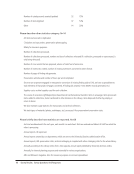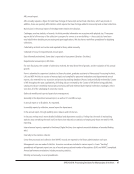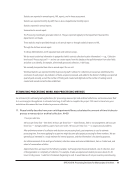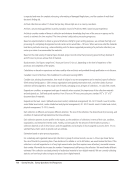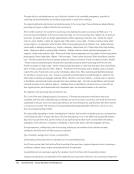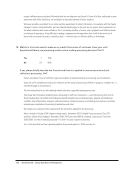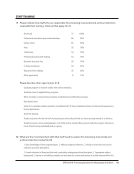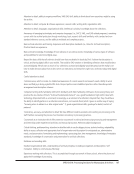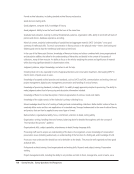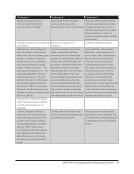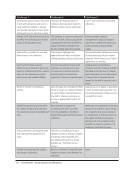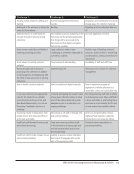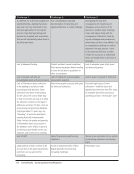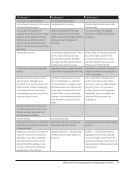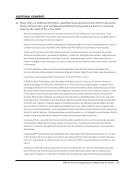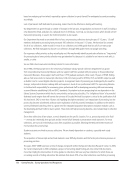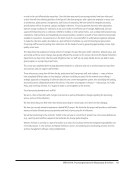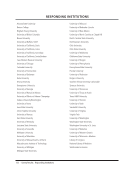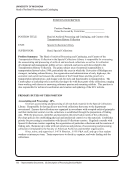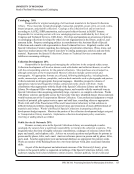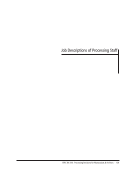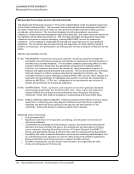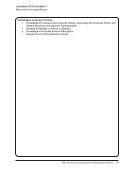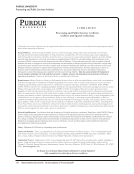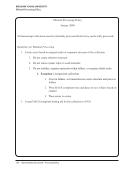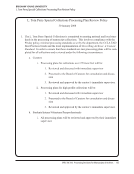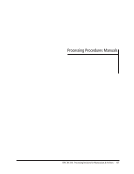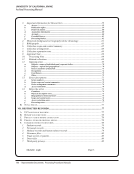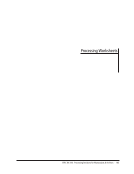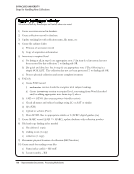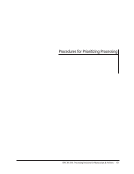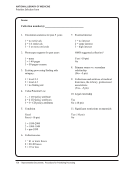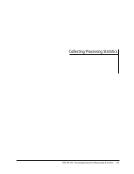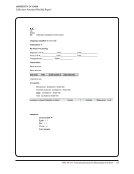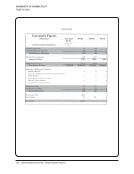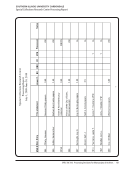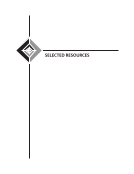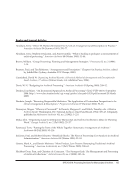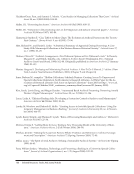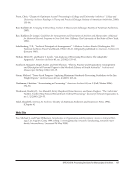SPEC Kit 314: Processing Decisions for Manuscripts &Archives · 81
RBSC: all fonds have online access to finding aids. This requires a higher standard of finding aids as well.
See above. Has allowed us to create much more basic OCLC records that link to the EAD.
See above. I’m unclear what you are asking: mark up is a means to an end and ensues from a processing decision, not
vice versa.
See above. We have become more aware of the need to describe contents in more detail, using more keywords and
proper names.
Since 1995, the impact has been enormous, making online finding aids the chief access tool for manuscript collections.
World-wide reference requests reflect usefulness of specificity of information at the folder and item level.
The use of the Web and EADs to make finding aids available required that we re-examine processing policies and
workflows. This led to a broader utilization of graduate students and paraprofessional staff to process collections.
Patrons are able to find our collections on the Web.
This has become a requirement for archives today if they want to meet researchers “where they are,” i.e., online and for
their collection to be located and used. If a researcher finds a collection online and requests it, the collection is bumped
up in terms of processing priority.
We are moving toward eliminating paper finding aids, which reduces our costs. Reference is more efficient when
patrons bring in call #s, Box and Folder #s or finding aids.
We are not hosting as yet. See TARO.
We do host finding aids online and have found them very helpful for our researchers. Whenever we can put an inventory
list online we do.
We do this all the time. This is expected of us. The size of the finding aid and level of description do not hinder us from
posting finding aids on the Web.
We expect greater scrutiny of our online finding aids, and are also aware that users’ ability to word search within a
finding aid offers additional means of access not dependent on browse order. We also make sure that researchers are
directed to consult with reference staff within the finding aid itself, as many come directly to the finding aid through a
Web search rather than through the Library’s Web site. Our processing decisions have not been appreciably affected,
however. Regarding the timing of online access to information about the division’s material, a minimal-level catalog
record of newly received collections is created at the time of accessioning and made available in the OPAC information
about additions to an existing collection, processed, unprocessed, or partially processed, is incorporated in the catalog
record of that collection at the time of accessioning.
We have descriptive information about collections on our Web site, but finding aids generally appear in Online Archive
of California. Anything on the Web site greatly enhances its visibility and use.
We have some finding aids on the Web, but only because they were fully processed in the past and we receive funds to
send them out for EAD-encoding.
We mount our finding aids as PDF files linked to collection level MARC records in the OPAC. The visibility of our finding
aids has resulted in a marked increase in use, and in reference queries. We converted legacy finding aids to PDF to
enhance access, even if they do not fully comply with current processing guidelines.
We try to create description that is useful in a searchable environment and viewable on the screen. We emphasize
names and subjects useful in keyword searches we eliminate repetitive description that might cause a user to scroll too
much. We describe materials for the Web, so we consciously create description with the availability and searchability of
RBSC: all fonds have online access to finding aids. This requires a higher standard of finding aids as well.
See above. Has allowed us to create much more basic OCLC records that link to the EAD.
See above. I’m unclear what you are asking: mark up is a means to an end and ensues from a processing decision, not
vice versa.
See above. We have become more aware of the need to describe contents in more detail, using more keywords and
proper names.
Since 1995, the impact has been enormous, making online finding aids the chief access tool for manuscript collections.
World-wide reference requests reflect usefulness of specificity of information at the folder and item level.
The use of the Web and EADs to make finding aids available required that we re-examine processing policies and
workflows. This led to a broader utilization of graduate students and paraprofessional staff to process collections.
Patrons are able to find our collections on the Web.
This has become a requirement for archives today if they want to meet researchers “where they are,” i.e., online and for
their collection to be located and used. If a researcher finds a collection online and requests it, the collection is bumped
up in terms of processing priority.
We are moving toward eliminating paper finding aids, which reduces our costs. Reference is more efficient when
patrons bring in call #s, Box and Folder #s or finding aids.
We are not hosting as yet. See TARO.
We do host finding aids online and have found them very helpful for our researchers. Whenever we can put an inventory
list online we do.
We do this all the time. This is expected of us. The size of the finding aid and level of description do not hinder us from
posting finding aids on the Web.
We expect greater scrutiny of our online finding aids, and are also aware that users’ ability to word search within a
finding aid offers additional means of access not dependent on browse order. We also make sure that researchers are
directed to consult with reference staff within the finding aid itself, as many come directly to the finding aid through a
Web search rather than through the Library’s Web site. Our processing decisions have not been appreciably affected,
however. Regarding the timing of online access to information about the division’s material, a minimal-level catalog
record of newly received collections is created at the time of accessioning and made available in the OPAC information
about additions to an existing collection, processed, unprocessed, or partially processed, is incorporated in the catalog
record of that collection at the time of accessioning.
We have descriptive information about collections on our Web site, but finding aids generally appear in Online Archive
of California. Anything on the Web site greatly enhances its visibility and use.
We have some finding aids on the Web, but only because they were fully processed in the past and we receive funds to
send them out for EAD-encoding.
We mount our finding aids as PDF files linked to collection level MARC records in the OPAC. The visibility of our finding
aids has resulted in a marked increase in use, and in reference queries. We converted legacy finding aids to PDF to
enhance access, even if they do not fully comply with current processing guidelines.
We try to create description that is useful in a searchable environment and viewable on the screen. We emphasize
names and subjects useful in keyword searches we eliminate repetitive description that might cause a user to scroll too
much. We describe materials for the Web, so we consciously create description with the availability and searchability of












